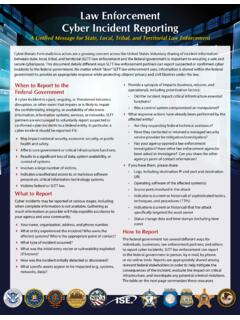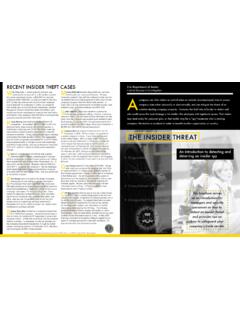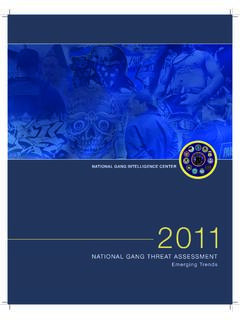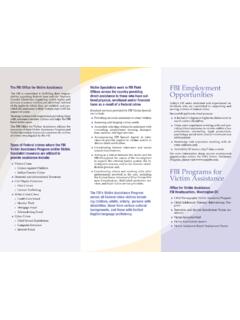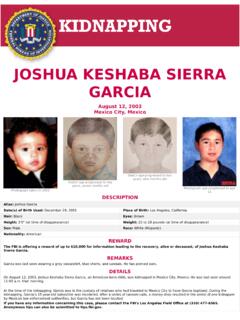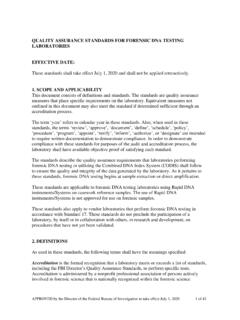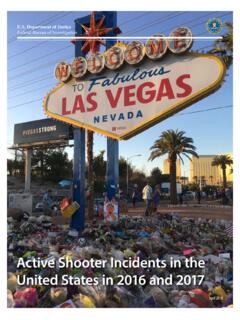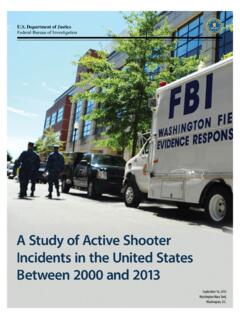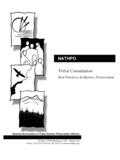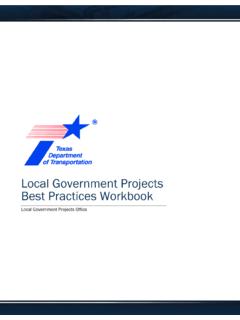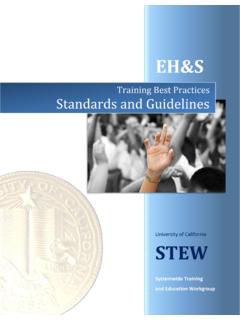Transcription of INTERROGATION BEST PRACTICES HIGH-VALUE DETAINEE ... …
1 INTERROGATION best PRACTICES HIGH-VALUE DETAINEE INTERROGATION group AUGUST 26, 2016 1 I. Introduction The National Defense Authorization Act for Fiscal Year 2016 requires the HIGH-VALUE DETAINEE INTERROGATION group (HIG) to submit a report on best PRACTICES for This report, which includes (1) a brief overview of the HIG, (2) the methodology used to select the INTERROGATION best PRACTICES contained herein, (3) INTERROGATION best PRACTICES , and (4) concluding comments, fulfills the aforementioned requirement. The best PRACTICES , which are grounded in science, may be used to inform changes to Army Field Manual This report does not provide a comprehensive review of the science related to best PRACTICES . A report which details the relevant scientific research is currently under review.
2 II. Overview of the HIG In January 2009, Executive Order 13491 established a task force to review the US Government s INTERROGATION and transfer policies. In August 2009, that task force recommended the creation of the HIG to improve the US Government s ability to interrogate the most dangerous Shortly thereafter, the HIG was formally established to deploy the nation s best available INTERROGATION resources against terrorism detainees identified as having access to information with the greatest potential to prevent terrorist attacks against the United States and its [and to] serve as the locus for INTERROGATION best PRACTICES , lessons learned, and research for the federal government. 3 The HIG Research Program has conducted a comprehensive review of existing research on behavioral and social sciences and has commissioned numerous scientific studies on an array of topics related to INTERROGATION .
3 The HIG s research program adheres to applicable US Government guidelines for scientific experimentation and the protection of human detainees in scientific research. See, , 45 Part 46 (subpart A) (Department of Health and Human Services regulations setting forth the Common Rule which has been adopted by numerous federal agencies that conduct or support research), 32 Part 219 (Department of Defense); 28 Part 46 (Department of Justice), and Executive Order 12333 (Intelligence Community agencies). III. Methodology The HIG continuously strives to identify INTERROGATION best PRACTICES via a dynamic process wherein research informs training, training informs practice, and practice informs research. HIG researchers and practitioners have applied generally broad-based science to INTERROGATION to identify best PRACTICES .
4 These PRACTICES are continuously assessed. Appendix B provides further reading. 1 See Appendix A for the full text. 2 See for additional information. 3 Charter for Operations of Interagency HIGH-VALUE DETAINEE INTERROGATION group April 2010, page 1. 2 IV. INTERROGATION best PRACTICES While there is no agreed upon definition of INTERROGATION , most definitions reflect that it is a formal process that includes mostly accusatory questioning designed to obtain information a DETAINEE views as personal or secret. In contrast, the HIG assumes that the purpose of an INTERROGATION is to obtain valuable intelligence. The selected best PRACTICES listed below, which are described in the order that they may occur in an INTERROGATION , reveal that an effective INTERROGATION requires an individualized, flexible, rapport-based, and information-gathering approach.
5 The INTERROGATION is a team effort. The composition of an INTERROGATION team varies based on the unique circumstances surrounding each INTERROGATION . Ideally, the team consists of a team leader, interrogator, and trained observers. One or two interrogators interact with the DETAINEE , and the other members of the team observe and provide feedback on the interaction based on the specific criteria listed below. Members of the team, regardless of their roles, receive standard training with respect to the concepts discussed herein. Such training allows for a shared vocabulary that captures the nuances of interrogators interactions with detainees and enhances the overall efficiency of interrogations. Members of the team observe and analyze multiple aspects of the INTERROGATION and provide relevant feedback to the interrogator in a timely manner so he or she can make needed adjustments.
6 Specifically, observers are focused on the words used by the interrogator and DETAINEE as well as on the interpersonal dynamic between the two. The team uses observations to help make interactions more productive. The INTERROGATION team prepares for an INTERROGATION by systematically organizing, and making visually available, facts, intelligence, and inferences regarding the DETAINEE and his or her needs and motivations. The team lays out the facts ( , what is definitively known) and intelligence ( , what is believed about the DETAINEE ) based on available information; the facts and intelligence are then used to make logical inferences about the DETAINEE s motivations, how the DETAINEE will respond to different approaches, and what the DETAINEE likely knows.
7 The team uses information gaps, intelligence requirements, and the aforementioned information to develop objectives and to design a questioning plan to achieve those objectives. As the INTERROGATION progresses, facts, intelligence, and inferences are updated, and the team adjusts its objectives as needed. The team is more likely to obtain information from the DETAINEE using methods that draw out what the DETAINEE knows as opposed to only focusing on the intelligence the team would like to obtain. 3 The INTERROGATION team carefully plans for and manages first impressions. First impressions play a central role in determining the nature of a relationship. To form a positive first impression, the team assesses the type of person the DETAINEE is most likely to respond to and develops a brand for the interrogator that is consistent with this inference.
8 The interrogator s brand should be genuine and align with the perceived needs and motivations of the DETAINEE , adjusted as needed throughout the INTERROGATION . The first lines spoken by the interrogator are carefully constructed since they communicate the interrogator s brand and the purpose and potential outcomes of the INTERROGATION . Those lines set the tone for the rest of the interaction(s). As part of the planning effort, the INTERROGATION team works to fashion an environment conducive to a productive interaction. The team uses the physical setting, the appearance of the interrogator, and/or specific language to positively affect the DETAINEE s perception of the situation. The INTERROGATION team uses models to build and gauge rapport. Building rapport is generally accepted as the most important component of a successful INTERROGATION .
9 Rapport building begins with the interrogator developing a common understanding with the DETAINEE of the purpose and scope of the INTERROGATION . Rapport building occurs throughout the INTERROGATION as the interrogator notes the DETAINEE s needs and motivations and allows the DETAINEE a sense of agency within the interaction The interrogator facilitates a relationship with the DETAINEE wherein the DETAINEE feels a greater sense of control, increasing his or her motivation to provide information. This is accomplished by the interrogator: o Allowing the DETAINEE to develop a sense of autonomy, making him or her less likely to feel coerced and more likely to cooperate. o Rather than judging the DETAINEE , accepting that whatever he or she has done is only a part of who the DETAINEE is.
10 O Rather than rigidly adhering to a questioning plan, providing the DETAINEE space to discuss topics he or she would like to discuss. Although the DETAINEE can discuss other topics as a counter- INTERROGATION technique, the interrogator can use paraphrasing to get the DETAINEE back on track. o Demonstrating empathy by understanding the DETAINEE s perspective and recognizing that the DETAINEE s motivations are valid to him or her. 4 o Using skillful conversation to evoke the motivations and beliefs of the DETAINEE . Interrogators can present the DETAINEE with discrepant facts and statements and ask that he or she explain any inconsistencies. Individuals observing the INTERROGATION are generally more effective at monitoring the interrogator s behavior than the interrogator.

